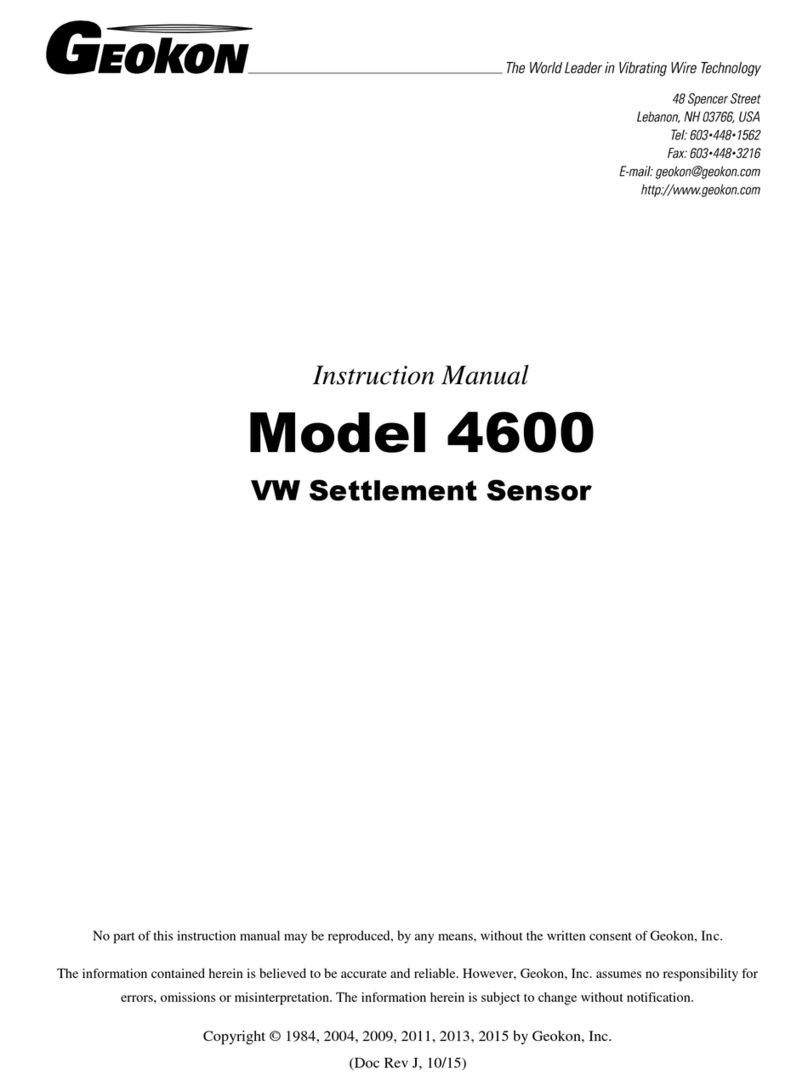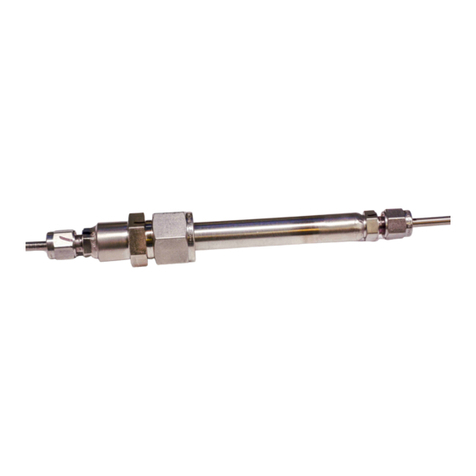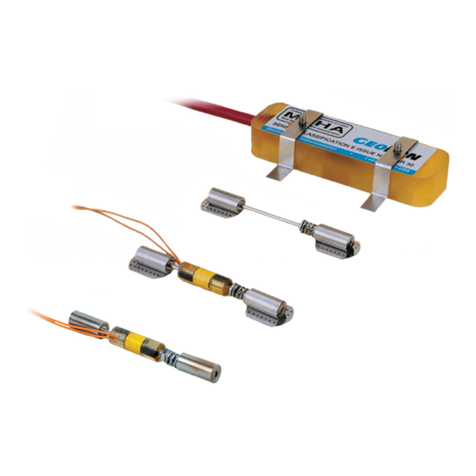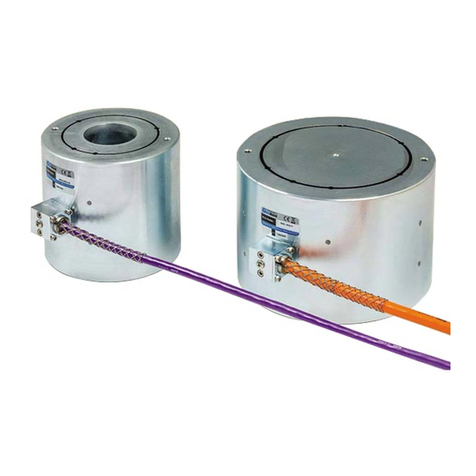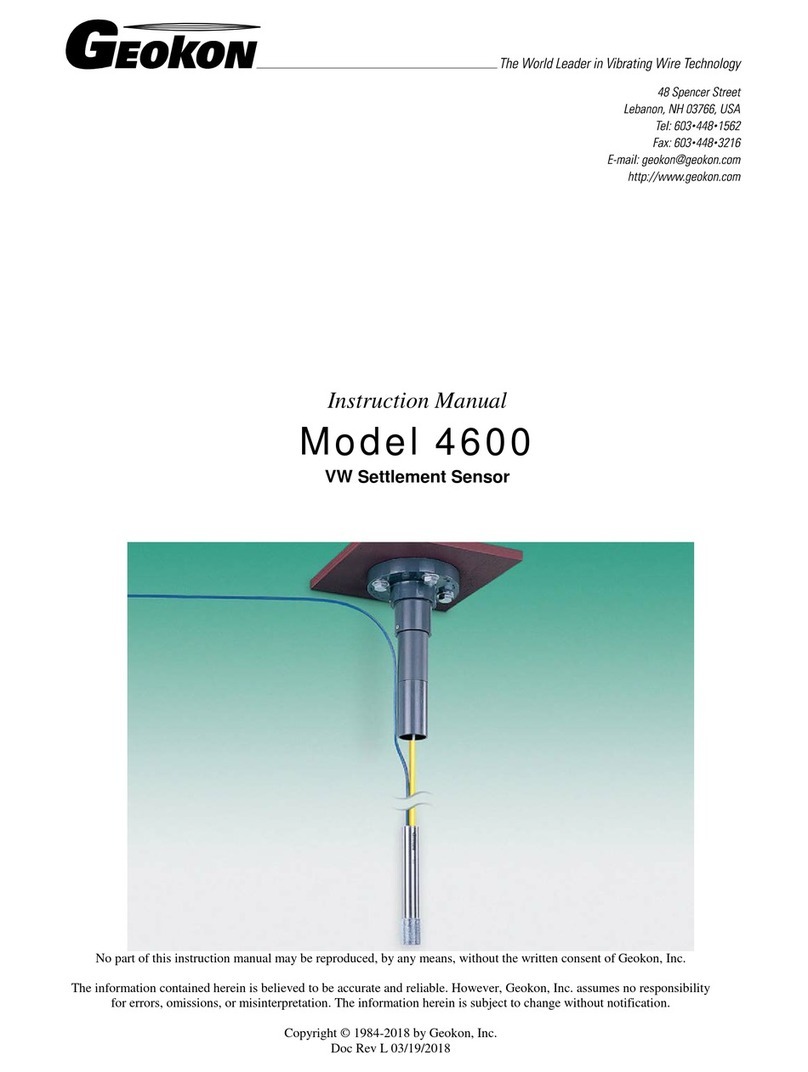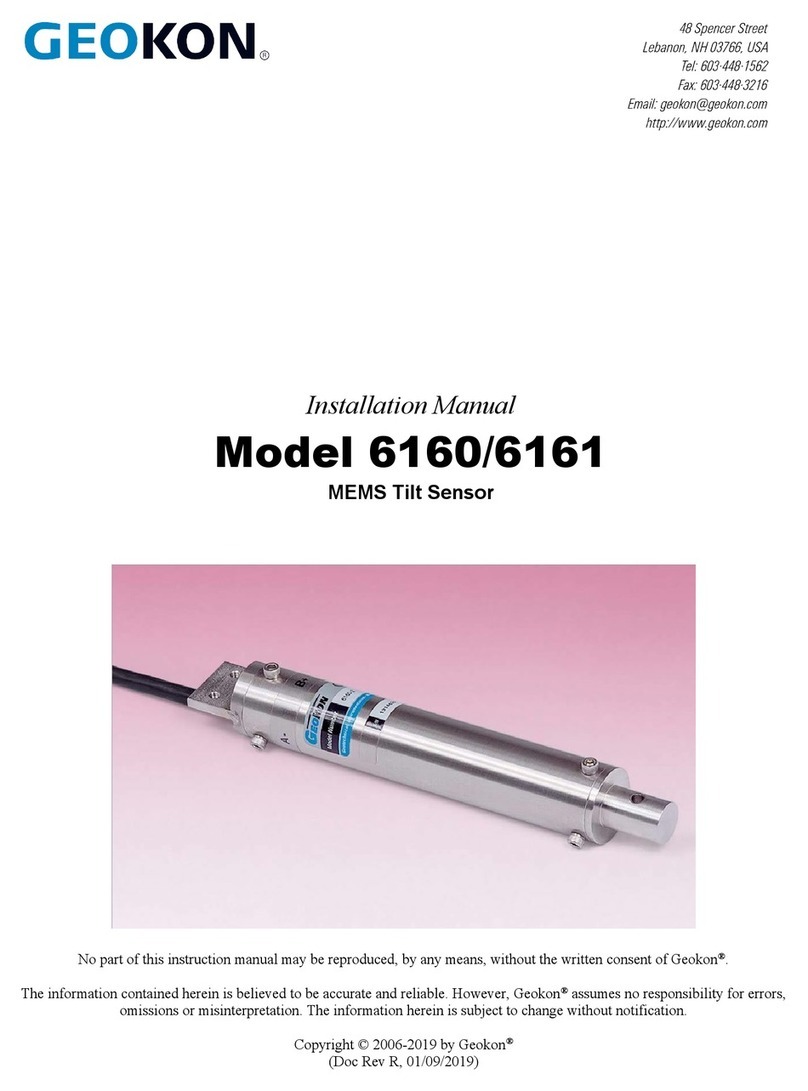
I
TABLE OF CONTENTS
1. INTRODUCTION............................................................................................................................................1
2. PRELIMINARY CHECKS......................................................................................................................2
3. GAUGE INSTALLATION.......................................................................................................................3
3.1 CONNECTING THE MOUNTING BLOCKS.......................................................................3
3.2 INSTALLATION ON STEEL SURFACES ............................................................................3
3.2.1 WELDING..............................................................................................................................................3
3.2.2 INSTALLATION ON DRIVEN STEEL PILES ..............................................................................4
3.3 INSTALLATION USING EPOXY CEMENTS....................................................................5
3.3.1 CONCRETE SURFACES ...................................................................................................................5
3.3.2 STEEL SURFACES .............................................................................................................................6
3.4 INSTALLING ON CONCRETE SURFACES USING ANCHOR STUDS.......6
3.5 SETTING THE STRAIN GAUGE ................................................................................................7
4. GAUGE PROTECTION.............................................................................................................................8
4.1 PROTECTION FROM MECHANICAL DAMAGE USING GEOKON
MODEL 4000-6.......................................................................................................................................8
4.2 PROTECTION FROM DIRECT SUNLIGHT AND RAPID CHANGES IN
AMBIENT TEMPERATURE ...........................................................................................................9
4.3 CABLE AND CONNECTOR PROTECTION........................................................................9
4.4 CABLE SPLICING AND TERMINATION............................................................................9
4.5 PROTECTION FROM CORROSION........................................................................................9
4.6 LIGHTNING PROTECTION............................................................................................................9
5. GAUGE LOCATION ................................................................................................................................11
5.1 END EFFECTS...................................................................................................................................... 11
5.2 WELDING EFFECTS........................................................................................................................ 11
5.3 BENDING MOMENTS................................................................................................................... 11
6. TAKING READINGS ............................................................................................................................. 15
6.1 STRAIN GAUGE READOUT POSITIONS ...................................................................... 15
6.2 GK-404 READOUT BOX.............................................................................................................. 15
6.2.1 OPERATING THE GK-404 ........................................................................................................... 15
6.3 GK-405 READOUT BOX.............................................................................................................. 16
6.3.1 CONNECTING SENSORS WITH 10-PIN BULKHEAD CONNECTORS
ATTACHED ....................................................................................................................................... 16
6.3.2 CONNECTING SENSORS WITH BARE LEADS................................................................... 17
6.3.3 OPERATING THE GK-405 ........................................................................................................... 17
6.4 GK-403 READOUT BOX (OBSOLETE MODEL) ........................................................ 17


